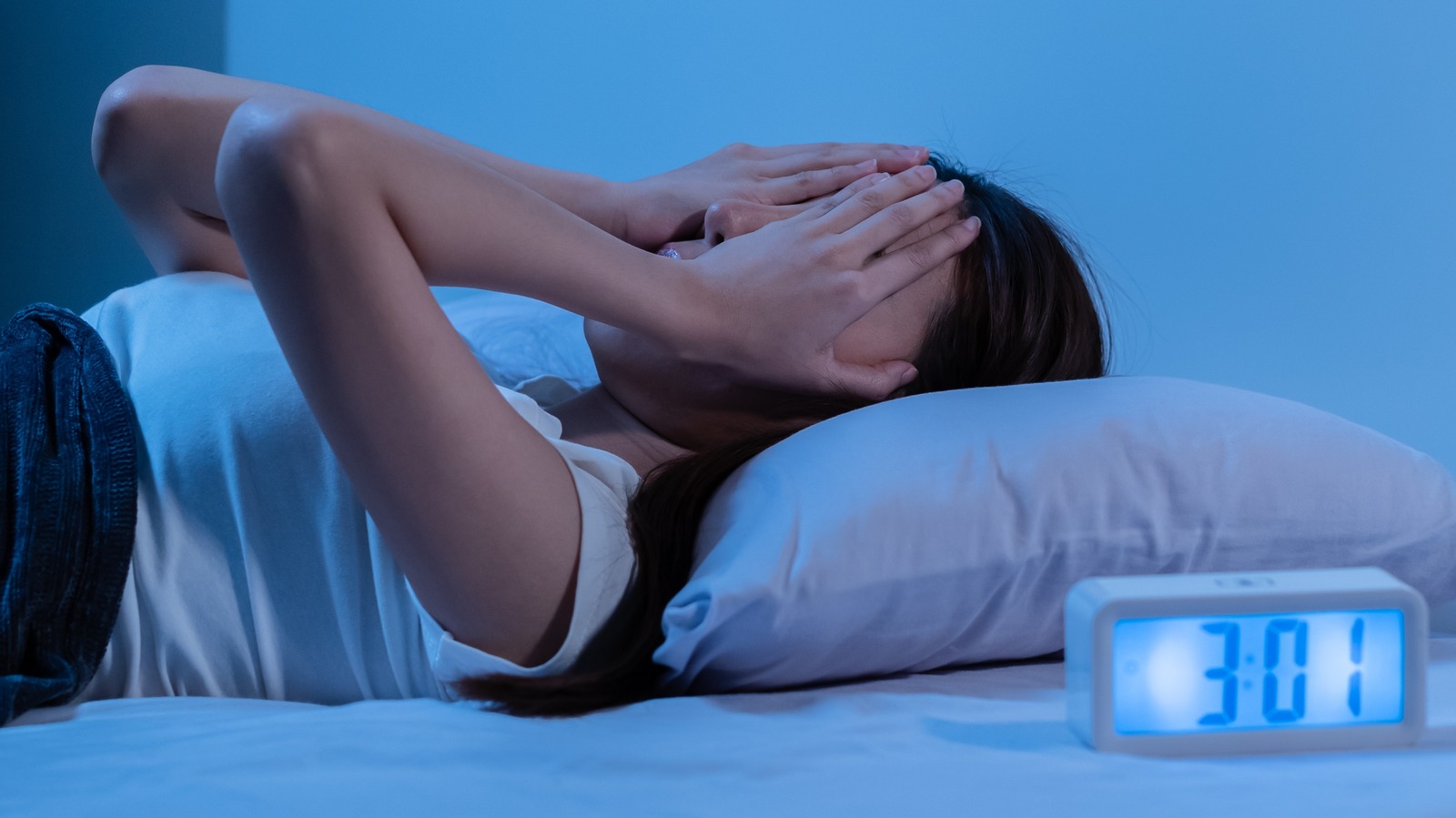Stress can make falling asleep and staying asleep feel impossible. When you’re stressed, the body’s nervous system is heightened, keeping your mind racing and your body alert. This guide offers practical, calming strategies that help you relax, break the stress-sleep cycle, and prepare your mind and environment for restful sleep. Improving your overall sleep hygiene tips is the first step toward reclaiming your nights.
Understanding the Stress-Sleep Connection
Ever had one of those nights where your body is exhausted but your brain refuses to switch off? That’s stress at work. When you’re stressed, your body goes into its primal fight or flight response, a state designed to keep you alert and ready for danger.
This process floods your system with hormones like adrenaline and cortisol. While useful for escaping a real threat, it’s not so great when you’re just trying to sleep. Cortisol, in particular, acts like an alarm clock for your body, promoting wakefulness. High levels at night can make it incredibly difficult to drift off.
This creates a frustrating cycle: stress causes poor sleep, and a lack of sleep makes you less resilient to stress the next day. Breaking this loop is essential for both your mental health and physical well-being.
Creating a Sleep-Friendly Environment
Your bedroom should be a sanctuary for rest, not a place where stress follows you. Simple changes to your environment can send powerful signals to your brain that it’s time to wind down.
Think of it as setting the stage for sleep. Start with the basics:
- Keep it Cool: A cool room is more conducive to sleep. The ideal temperature is typically between 60-67°F (15-19°C).
- Embrace the Dark: Light is a key signal for wakefulness. Use blackout curtains or an eye mask to block out all light. Even a small amount can disrupt your rest. The color of the light in your room also matters, and you might be surprised by the best color of light for sleep.
- Power Down Screens: The blue light from phones, tablets, and TVs suppresses melatonin, the hormone that regulates your sleep-wake cycle. Put all screens away at least an hour before bed.
- Try Calming Scents: Aromatherapy using scents like lavender or chamomile can have a relaxing effect. A few drops of essential oil in a diffuser can help create a peaceful atmosphere.

Establishing a Relaxing Bedtime Routine
A consistent bedtime routine is one of the most effective ways to combat stress-related sleeplessness. It trains your brain to recognize that sleep is coming, allowing your body to start the process of winding down.
This doesn’t need to be complicated. The goal is to choose a series of calm, enjoyable activities that you can do every night in the 30-60 minutes before you want to sleep.
Instead of scrolling through your phone, try reading a physical book under a dim light. Listen to some soft, instrumental music or a calming podcast. A warm bath or shower can also work wonders; the subsequent drop in your body temperature helps induce sleepiness.
What you eat and drink also plays a part. Avoid caffeine after 2 p.m. and steer clear of heavy, spicy, or sugary meals close to bedtime, as they can cause discomfort and disrupt sleep. A light, healthy snack is fine if you’re hungry.
Mind and Body Relaxation Techniques
When your mind is racing, you need tools to gently apply the brakes. These techniques help quiet the mental chatter and release physical tension stored in your body.
Deep Breathing: This is the simplest and most direct way to calm your nervous system. Try the 4-7-8 method: Inhale through your nose for 4 seconds, hold your breath for 7 seconds, and exhale slowly through your mouth for 8 seconds. Repeat this a few times until you feel your heart rate slow down.
Progressive Muscle Relaxation (PMR): Stress often causes us to tense our muscles without even realizing it. PMR involves tensing a specific muscle group (like your feet) for a few seconds and then completely releasing the tension. Work your way up your body, from your toes to your forehead.
Journaling: Sometimes, the best way to get thoughts out of your head is to put them on paper. Keep a notebook by your bed and spend a few minutes doing a “brain dump.” Write down everything you’re worried about or tasks you need to remember for tomorrow. This act of externalizing your thoughts can provide a sense of closure.

Managing Sleep Habits and Daytime Activities
How you spend your day has a huge impact on how you sleep at night. Your daily habits can either fuel your stress or help you manage it.
Sticking to a consistent schedule, even on weekends, is fundamental. Waking up and going to bed around the same time helps regulate your body’s internal clock, or circadian rhythm. If your rhythm is completely off, learning how to fix your sleep schedule can be a great starting point.
Daytime exercise is another powerful stress-reducer. A brisk walk, a jog, or a yoga session can improve sleep quality. Just try to avoid intense workouts in the final two hours before bed, as they can be too stimulating.
Finally, be mindful of naps. While a short 20-minute nap can be refreshing, long or late-afternoon naps can make it much harder to fall asleep at night.
Handling Nighttime Wakefulness
Waking up in the middle of the night with your mind racing is incredibly frustrating. The worst thing you can do is lie there, watching the clock and worrying about not sleeping. This only creates more anxiety.

Instead, try the 15-minute rule. If you haven’t fallen back asleep after about 15-20 minutes, get out of bed. Go to another room and do something calm and boring in dim light—read a dull book, listen to soft music, or do some gentle stretches.
The goal is to break the association between your bed and the anxiety of being awake. Don’t engage with screens or do anything stimulating. Once you start to feel sleepy again, head back to bed. Don’t try to force sleep; let it come to you.
Conclusion
Learning how to sleep when stressed is a journey, not an overnight fix. It’s about finding the small, manageable techniques that work for you and practicing them with patience. Be kind to yourself on difficult nights and celebrate the small victories.
By creating a peaceful environment, establishing a calming routine, and learning to quiet your mind, you can break the stress-sleep cycle. Building good sleep habits takes time, but the payoff—restful nights and more resilient days—is well worth the effort. For more insights on wellness and mindful living, feel free to explore more on our blog at www.notonetype.org.


You may also like this
How to Sleep Early: Practical Steps to Shift Your Bedtime
Struggling to fall asleep early? You’re not alone. For years, I was a night owl,...
Nov
Best Color Light for Sleep: Red, Amber & Warm Light Guide
Choosing the right color of light for your bedroom can make a real difference in...
Nov
Best Position to Sleep: Left Side or Right Side?
Have you ever woken up feeling stiff or noticed that late-night snack didn’t sit so...
Nov
The Best Sleep Position: Which One Is Right for You?
The position you sleep in can make or break your night’s rest—and your next-day comfort....
Nov
How to Fix Your Sleep Schedule: Practical Tips for Better Sleep
Feeling like a zombie during the day and wide awake at night? I’ve been there....
Nov
Sleep Hygiene Tips: 15+ Proven Ways to Sleep Better Tonight
Sleep hygiene is one of the simplest yet most effective ways to reclaim quality rest....
Nov